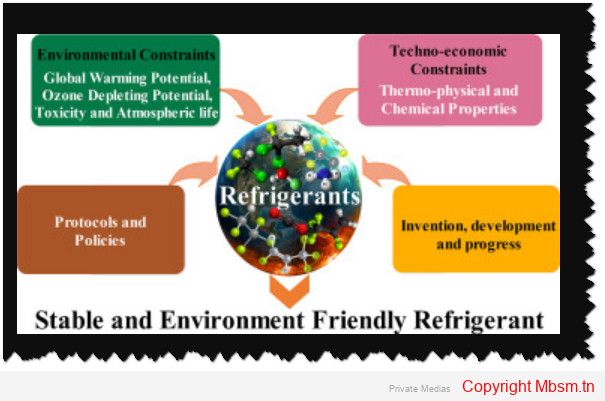Refrigerants play a crucial role in the efficiency of cooling systems, particularly in vapor compression refrigeration cycles. This analysis focuses on two commonly used refrigerants: R134A (tetrafluoroethane) and R600A (isobutane). Both refrigerants have distinct properties that influence their performance in various applications, including air conditioning and refrigeration.Cooling Capacity and Coefficient of Performance (COP)
- Cooling Capacity: R134A generally exhibits a higher cooling capacity compared to R600A. For instance, studies indicate that R134A has a cooling capacity of approximately 376.41 W, while R600A’s capacity is around 338.11 W1. This difference is significant when considering the size and efficiency of cooling systems.
- Coefficient of Performance (COP): The COP is a critical measure of a refrigerant’s efficiency, defined as the ratio of useful cooling provided to the work input required. R134A typically has a COP of about 3.01, which is higher than R600A’s COP of approximately 2.711. This indicates that R134A can provide more cooling per unit of energy consumed, making it more efficient under certain conditions.
Thermophysical Properties
- Flow Rate and Specific Heat: The flow rate for R134A is higher than that for R600A, which suggests that R134A has a lower evaporative specific heat1. This characteristic allows for more efficient heat absorption during the evaporation process.
- Operating Conditions: Both refrigerants operate effectively within different temperature ranges. For example, R600A tends to perform better at lower evaporation temperatures (between -25 °C and -10 °C), while R134A is versatile across a broader range of conditions2.
Environmental Impact
- Global Warming Potential (GWP): R134A has a higher GWP compared to R600A, which is considered more environmentally friendly due to its lower impact on global warming. The push towards using low-GWP refrigerants like R600A aligns with global efforts to reduce greenhouse gas emissions25.
- Safety Considerations: While R600A is less harmful to the environment, it is flammable, necessitating careful engineering to prevent risks associated with leaks or system failures5. In contrast, R134A is non-flammable but poses environmental concerns due to its GWP.
Applications and Trends
- Industry Adoption: Many modern refrigeration systems are transitioning from R134A to R600A due to regulatory pressures and environmental considerations. However, the choice between these refrigerants often depends on specific application requirements, including safety, efficiency, and environmental impact46.
- Future Outlook: As regulations tighten around high-GWP substances, the adoption of alternatives like R600A is expected to increase. Innovations in system design will be crucial to safely harnessing the benefits of flammable refrigerants while maintaining efficiency.
In conclusion, both R134A and R600A have unique advantages and limitations that affect their performance in cooling systems. While R134A offers higher efficiency and cooling capacity, R600A presents a more environmentally friendly option with specific safety considerations. The choice between these refrigerants will increasingly depend on balancing performance needs with environmental responsibilities.

| Attachment | Type | Link |
|---|---|---|
| Mbsm-tn-private-media__Mbsm_media_2024-12-20_215137 | image/jpeg | Get Link |




